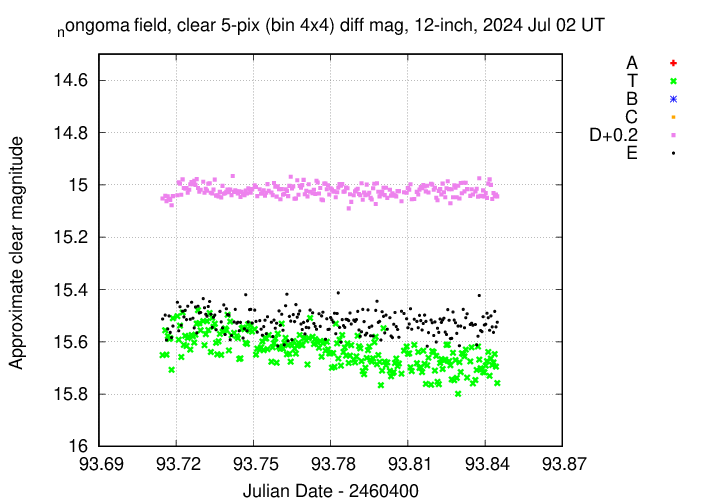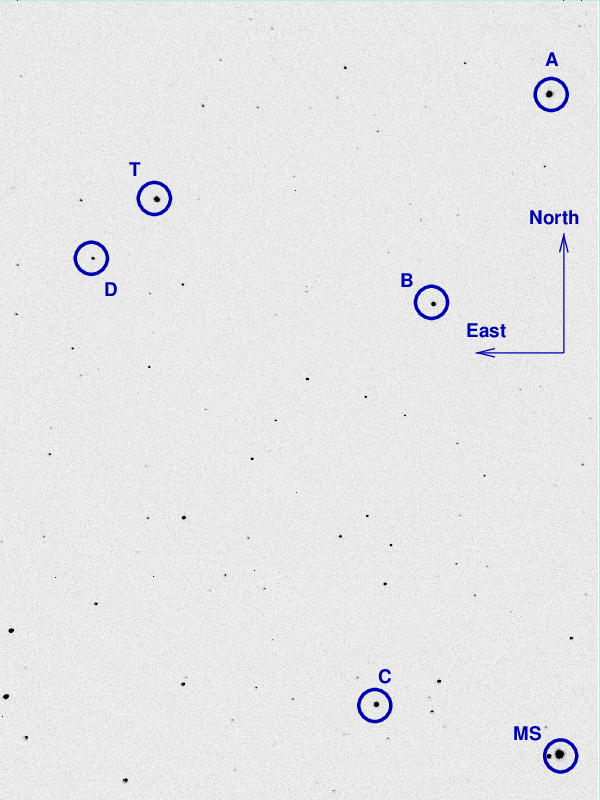
On the night of Jul 01/02, 2024, under very good conditions, I acquired images of the recurrent nova T CrB. This star undergoes outbursts at long intervals of 80 years or so. Its next outburst is predicted to occur soon, perhaps in 2024, and so I've joined the crowd who are monitoring it.
The object was still in its quiescent state tonight, at approximate V = 10.36.
I also observed the asteroid (1367) Nongoma, to see if I could contribute to a light-curve campaign on this object. The results continue to be promising, though I'll want to increase the exposure time, if I can.
This recurrent nova brightens from by about 8 magnitudes (!), from V = 10 to about V = 2, around every 80 years. Will we see another outburst this summer?
These observations involved:
Notes from the night:
Note on computer-telescope connection
During the following day, I returned to the Observatory to test the USB connections. We use a 7-port (plus 3-power-only) hub to connect the computer in the dome to equipment on the telescope. I unplugged everything from it, then re-plugged in, one at a time, to verify the status of the connections. I installed the program USBDeview to ease inspection of the connections, which helped.A USB cable runs to a Keyspan USB Serial Adapter (TrippLite Keyspan USA-19HS), from which an RJ12 cable runs to the LX200 mount. I set this unit up back in July, 2022, and it has been mostly working ever since. When it is connected, USBDeview shows it as active, but does NOT show any drive letter (such as "COM1" or "COM4") next to its name.
After unplugging and re-plugging all of the connections along this path, I tried using MaximDL to move the telescope manually (LX200 protocol, COM6) -- and it worked! USBDeview still didn't show "COM6" in the entry for this device, but it worked. I do not know which, if any, of the steps I took caused it to start working again.
The picture below shows a cropped image of the field of T CrB from Jun 14/15, 2024. The field of view is about 20 arcminutes across.

I've marked the location of several comparison stars, with magnitudes and names taken from the AAVSO's chart.
star name B V
------------------------------------------------------
A 000-BJS-901 11.190 10.566
B 000-BBW-805 11.840 11.187
C 000-BPC-198 13.049 12.336
--------------------------------------------------------------------------
When the target is centered, the finder TV shows this field:
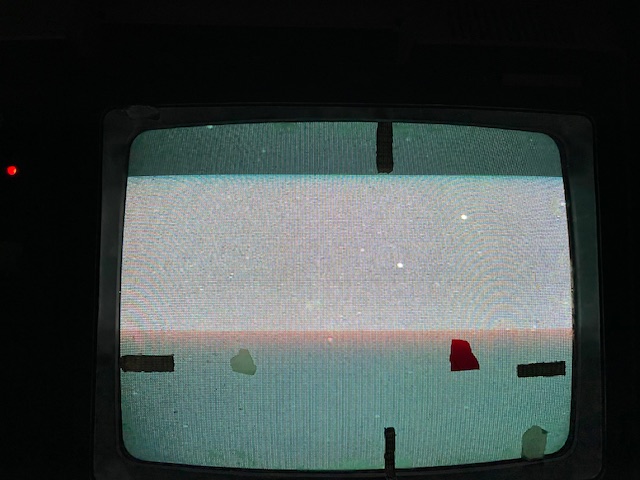
Here's the sky background over the course of the run. It was very clear. The discontinuity marks the time when I realized I was using the "R" filter, and replaced it with the "V" filter.
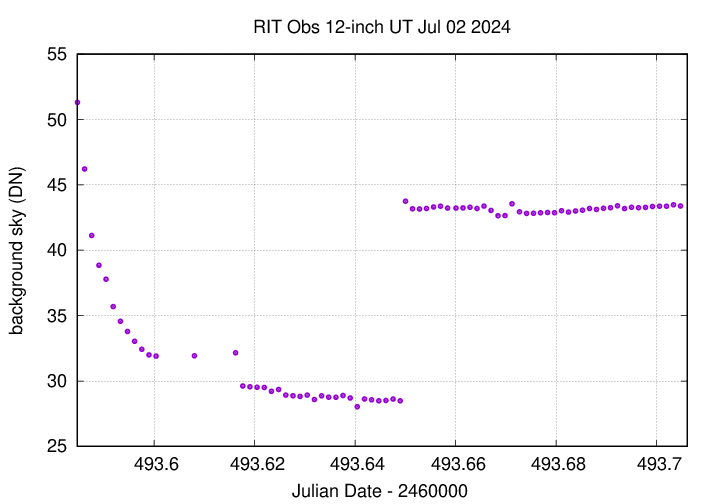
The FWHM was steady in V.
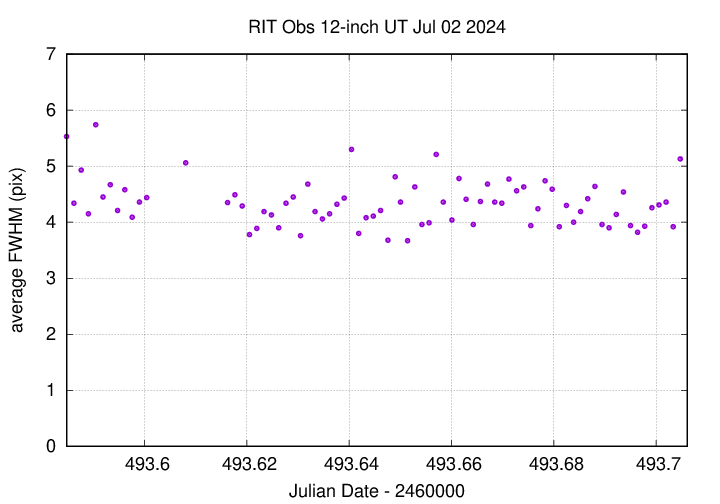
The graph below shows changes in the photometric zeropoint of an ensemble solution of the instrumental magnitudes over the course of the run. The small change is due to the increase in airmass.
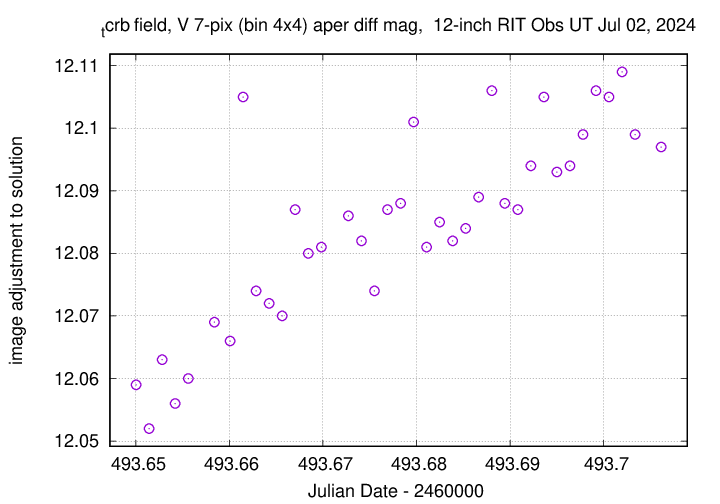
Using aperture photometry with a radius of 7 pixels in V filter (binned 4x4, each pixel is 1.036 arcsec, so a radius of 7.3 arcsec), and 7 pixels in B filter (binned 4x4, each pixel is 1.036 arcsec, so a radius of 7.3 arcsec), I measured the instrumental magnitudes of a number of reference stars and the target. Following the procedures outlined by Kent Honeycutt's article on inhomogeneous ensemble photometry, I used all stars available in each image to define a reference frame, and measured each star against this frame.
Sigma-vs-mag plots show that the floor in V-band was about 0.005 mag, which is good. It was 0.005 in B-band.
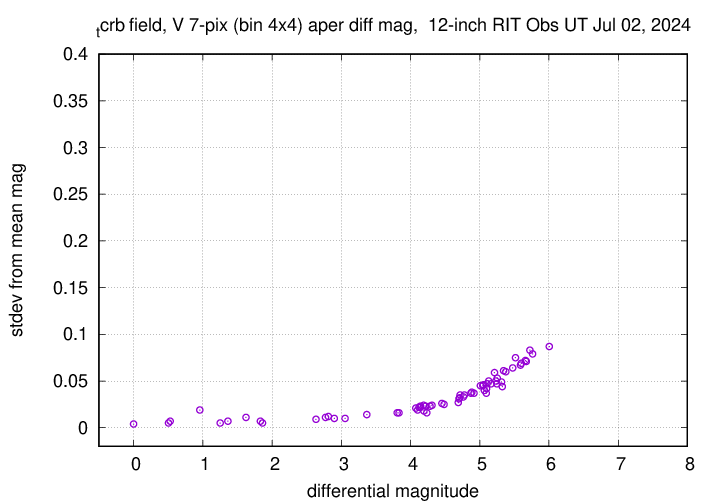
The measurements show relatively steady brightness. The B-band showed a bit more action, but nothing major.
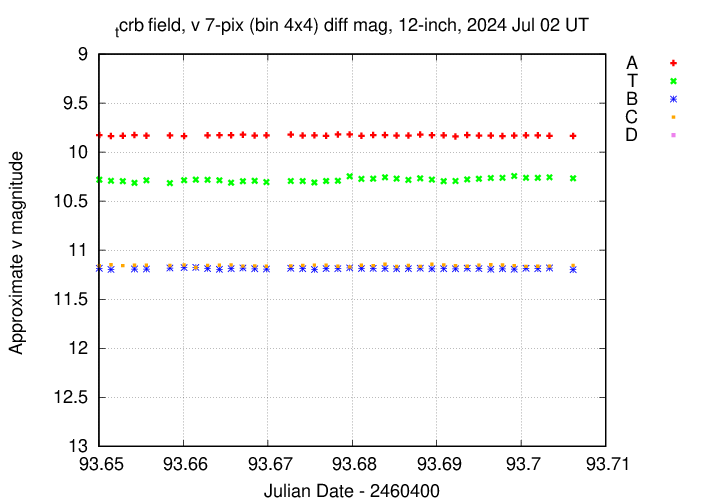
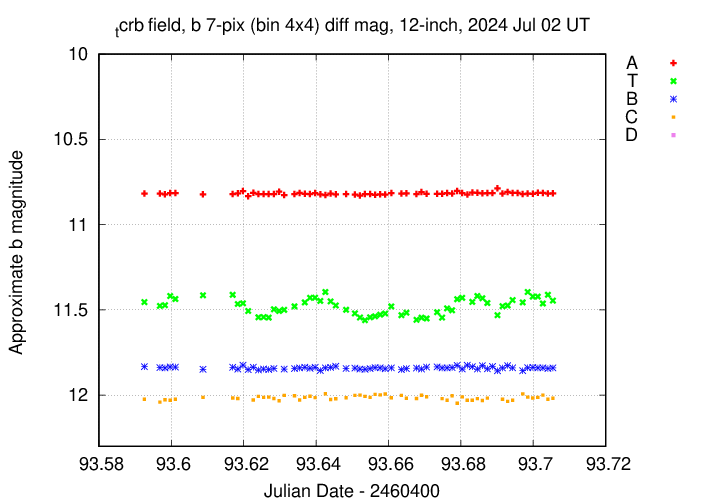
I've submitted these measurements to the AAVSO.
Not much is known about this asteroid. A set of seven nights of measurements of its light curves -- see Wisniewski, W. Z., et al., Icarus, 126, 395 (1997) -- suggests a period longer than one day, with short-term variations up to 0.2 mag.
A colleague mentioned that he might be preparing a campaign to try to pin down the rotation period, but the object is pretty faint: its V magnitude is around 15.5. Could I contribute? I decided to spend some time observing it to find out.
These observations involved:
On this night, the object was near position
RA = 21:20:30.5 Dec = +07:06:55 (J2000)
I observed for about 3.2 hours. The sky was very clear, and the Moon irrelevant.
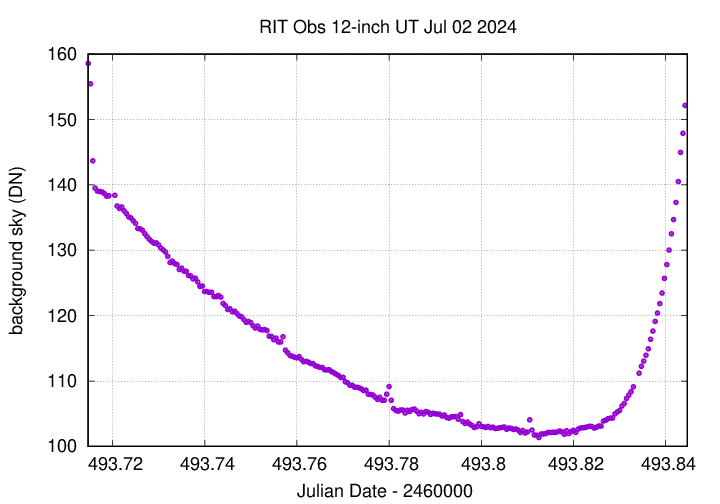
The outliers in this graph of the ensemble zero-point adjustment factor are due to slightly trailed images, not clouds.
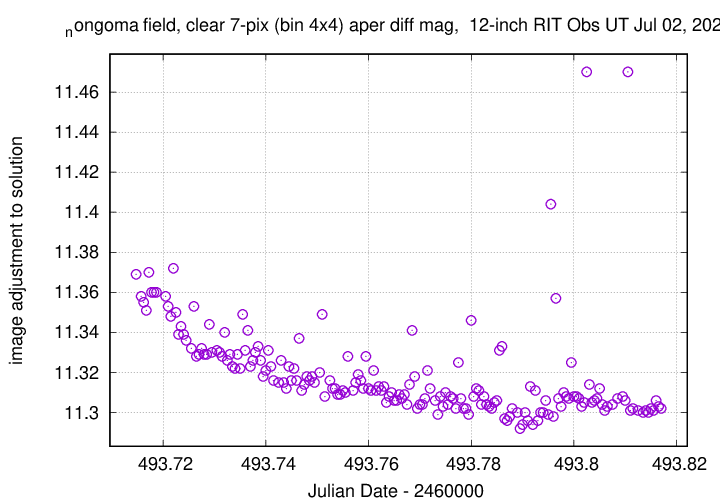
I was able to detect Nongoma clearly in all the images.
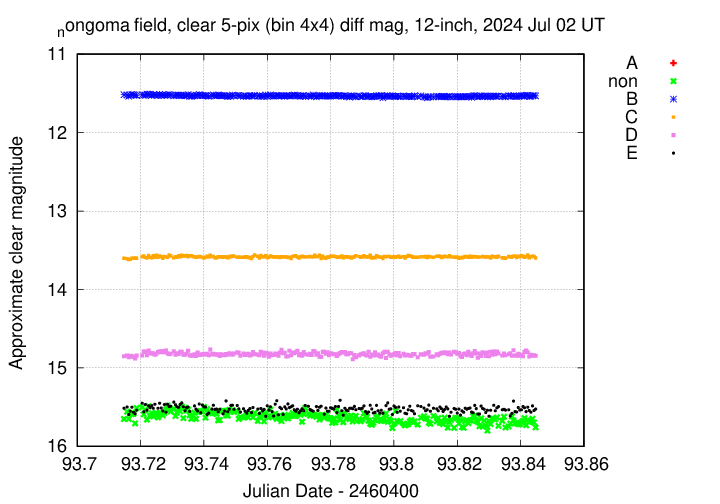
The target appears to fade a small amount throughout the run.
